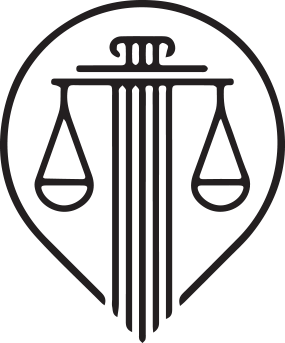Bankruptcy in Wisconsin: Useful Strategy to Stop Creditor Harassment and Return to Peace
In times of financial distress, bankruptcy can be a lifeline for individuals and businesses struggling with overwhelming debt. If you’re facing creditor calls and mounting bills in Wisconsin, you may wonder how to regain control of your financial situation and find peace once again. In this comprehensive guide, we will explore bankruptcy in Wisconsin, its different chapters, and how to initiate the process. We’ll also discuss the consequences of bankruptcy, court fees, and where to find crucial information. Whether you’re considering filing for bankruptcy or just seeking information, this guide will provide valuable insights.
Bankruptcy in Wisconsin: What You Need to Know
Bankruptcy is a legal process that allows individuals or businesses who owe more money than they can pay to either work out a repayment plan or have most of their debts wiped out. In Wisconsin, as in the rest of the United States, bankruptcy provides immediate protection from creditors once a bankruptcy petition is filed.
Bankruptcy in Wisconsin: Which Debts Are Dischargeable?
The Bankruptcy Code generally allows for the discharge of most debts, except for those specifically listed in 11 United States Code § 523. It’s crucial to understand which of your debts can be discharged when considering bankruptcy.
Bankruptcy in Wisconsin: Different “Chapters” in Bankruptcy
Wisconsin bankruptcy law encompasses several chapters, each serving different purposes:
- Chapter 7: Often referred to as “straight bankruptcy” or “liquidation,” Chapter 7 is available to individuals, corporations, or partnerships. A trustee is appointed to sell non-exempt property and use the proceeds to pay creditors. Individuals may claim certain property as exempt, allowing them to retain it in exchange for a discharge of certain types of debts.
- Chapter 12: Designed for family farmers, Chapter 12 has specific debt limitations, and a portion of income must come from farming operations. Family farmers propose a repayment plan based on future income, subject to court approval.
- Chapter 13: This chapter is for individuals with regular income and debt below certain thresholds. It allows debtors to keep their property while repaying creditors from their future income under a court-approved plan. Many debts that cannot be discharged can still be paid over time through Chapter 13.
Bankruptcy in Wisconsin: Court Fees for Filing Bankruptcy
The cost of filing for bankruptcy in Wisconsin varies depending on the chapter:
- Chapter 7: $338.00
- Chapter 11: $1,738.00
- Chapter 12: $278.00
- Chapter 13: $313.00
Bankruptcy in Wisconsin: Consequences of Filing for Bankruptcy
Filing for bankruptcy is not without consequences, and these may outweigh the benefits in some cases. It’s essential to consult with an attorney to understand how bankruptcy affects your specific situation. Consequences can include:
- Fees for filing and additional costs.
- Not all debts are dischargeable; some creditors may retain rights to seize property.
- Timely filing of asset and liability schedules is crucial; failure to do so may result in case dismissal.
- Restriction on obtaining another discharge within eight years for Chapter 7 and 11.
- Fraudulent information or acts can lead to denial of discharge and criminal penalties.
Bankruptcy in Wisconsin: Accessing Case Information
To access case information, including debtor names, case numbers, and chapters, you can use:
- VCIS (Voice Case Information System): Available 24/7 at 866-222-8029.
- PACER (Public Access To Court Electronic Records): An online platform that provides access to court records here.
Bankruptcy in Wisconsin: Obtaining Copies of Documents
To obtain copies of case documents, you can:
- Send a written request with a $32.00 per case search fee and a $0.50 cents per page photocopy fee.
- Visit the court in person for reduced fees of $0.10 per page.
Bankruptcy in Wisconsin: Certified Copies of Documents
If you need certified copies of documents, follow a similar process with a $32.00 per case search fee, an $11.00 certification fee per document, and a $0.50 cents per page photocopy fee.
Bankruptcy in Wisconsin: Archived Cases
For cases sent to the archive center, you can retrieve information by obtaining the Accession Number, Location Number, and Box Number from the clerk’s office where the case was filed.
Frequently Asked Questions about Bankruptcy in Wisconsin
Do I Need an Attorney for Bankruptcy?
While it’s possible to file for bankruptcy without an attorney (“pro se”), it’s highly recommended to seek legal counsel. The Clerk’s Office cannot provide legal advice, as it’s prohibited by 28 United States Code § 955.m Thus, the court cannot provide legal advice or assist with form completion.
What Is the Bankruptcy Code?
The Bankruptcy Code, enacted in 1978, provides legal provisions to help businesses and individuals in financial difficulty through various bankruptcy chapters. A copy of the Federal Rules of Bankruptcy Procedure (Bankruptcy Rules) is available in clerk’s office locations, legal libraries, and online. Local Rules supplement federal bankruptcy rules and can be obtained from the clerk’s office or downloaded from their website.
What are Required Forms for Initiating Bankruptcy?
To initiate a bankruptcy case in Wisconsin, you’ll need specific documents and forms listed under the filing requirements section of the court’s website. Official Bankruptcy Forms can be purchased at local stationery stores or downloaded from the court’s website. Ensure you type information on the forms, provide responses for all questions (use “N/A” if necessary), sign where required, and follow the matrix format instructions for your creditor list.
What is the Role of a Bankruptcy Trustee?
In most bankruptcy cases, a trustee is assigned to administer the proceedings. The trustee’s role includes overseeing the sale of non-exempt property (in Chapter 7), monitoring debtors’ compliance with repayment plans (in Chapter 12 and 13), and ensuring the bankruptcy process proceeds smoothly. The trustee’s name can be found at the top of the case docket and on various forms. You can obtain this information in person or through automated systems. The Office of the United States Trustee, part of the Department of Justice, appoints trustees and sets the dates and times for the First Meeting of Creditors (§341 Meetings). They monitor cases for bankruptcy fraud but cannot provide legal advice.
What Happens if you have Difficulties Handling Payments in Chapter 13?
If you face difficulties making Chapter 13 payments according to the plan, contact your trustee by phone and in writing to explain the issue and whether it’s temporary or permanent.
Contact an Experienced Bankruptcy Attorney
For personalized guidance and assistance with your bankruptcy case, consider calling experienced bankruptcy attorney Steve Eichsteadt at Dahlberg Law Office. You can reach Steve Eichsteadt at (262) 677-8999. He can provide you with the expert advice and legal representation you need during this challenging time.
Conclusion
Bankruptcy in Wisconsin is a complex legal process that can offer relief to those facing overwhelming debt. However, it’s essential to approach it with careful consideration and seek professional assistance when needed. Whether you’re exploring bankruptcy options or ready to initiate the process, this guide equips you with valuable information to make informed decisions about your financial future. Remember, you don’t have to face this journey alone; experienced attorneys like Steve Eichsteadt are here to help you navigate the path to financial recovery and peace of mind.


